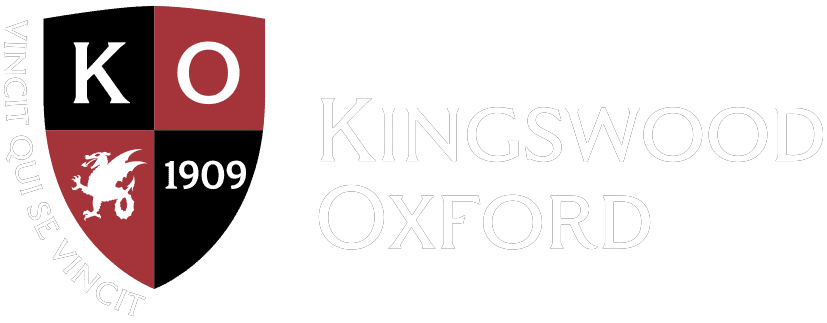March 27, 2025
Learning through Place: Washington, D.C. Trip
After a year and a half of planning, 14 students embarked on a six-day journey to Washington, D.C., to experience the power of place-based learning in the nation’s capital. Designed as an immersive civics and history experience, the trip was rooted in the curriculum of “We The People” and U.S. History courses. But what unfolded was far more than a lesson plan—it became a transformative week of real-world connection, discovery, and personal growth.

The idea for the trip began simply enough—with a Upper School history teacher Steph Sperber’s love of travel and a deep belief in the value of seeing government in action. “DC is low-hanging fruit,” Sperber explained. “It’s close, relevant, and ties directly into the curriculum. I kept saying, ‘Why wouldn’t we go?’ So I kept going. I kept pushing.”
Eventually, the school partnered with Close Up DC, an educational travel organization specializing in hands-on civic learning. Close Up designed a program filled with workshops, policy simulations, and study visits. The highlight? A full-scale Mock Congress with real Congressional bills and a nationwide mix of students.
The group landed early Sunday morning and hit the ground running—literally. From sunup to sundown, the itinerary was packed. Over the course of six full days, the students toured major landmarks, met with congressional staffers, participated in interactive workshops, and visited some of the country’s most powerful museums.
Along the way, the group added even more to the program to reflect their school’s values. They toured the National Archives, the African American History and Culture Museum, and the Smithsonian Museums and closed out the week with a profound visit to the Holocaust Museum—a moment many students cited as one of the most impactful of the trip.
The Capitol tour was a standout moment. Sperber said it was incredibly moving to pass through a low-ceilinged corridor of the Capitpil into the soaring iconic rotunda.—like walking into a cathedral of democracy. Sperber described it as a “sacred moment.”I’ve always felt this,” she said. “ But watching the students take it in was a highlight. It was the culmination of everything that I had been trying to get done on this trip.”
Although Congress was not in recess, students still had the chance to meet with policy staffers from Congressman John Larson, Senator Richard Blumenthal, and other Connecticut offices. They even took the underground tram from the House to the Senate side, adding a fun “insider” element to the experience.
One meeting stood out in particular: a young staffer named Natea, who grew up right near Hartford, shared her powerful personal story—from early advocacy after a tragedy to working alongside the late John Lewis in Atlanta and now serving in the Senate. Students asked thoughtful, challenging questions in every office they visited, engaging deeply in conversations about policy, the function (and dysfunction) of Congress, and life behind the scenes on the Hill.
Perhaps the most electrifying part of the trip was the Mock Congress, where students from all over the country debated real bills currently in the House of Representatives. Topics ranged from food security to social media regulation and homelessness, and students were assigned roles—committee chairs, lobbyists, and speakers.
Out of over 230 students participating in the program, 21 were selected as committee chair by their peers for their speaking skills and advocacy. Of those 21 students, nine of them were KO students —an impressive feat given they made up only a small portion of the total. “They were eloquent, diplomatic, passionate. They truly shined,” their teacher said proudly. “I was running around the ballroom filming like a proud mom.”
Beyond politics and policy, the trip offered eye-opening exposure to diverse perspectives. Students found themselves in workshop groups with peers from across the country—places like Puerto Rico, Hawaii, North Dakota, and Nebraska. Early workshops focused on political identity and efficacy, encouraging students to jump straight into tough discussions with people who didn’t necessarily share their worldview.
“For our kids, who come from a dark-blue bubble, hearing directly from students with different beliefs was powerful,” said Sperber. “It’s one thing to hear it on the news. It’s another to discuss it while walking between memorials. And those were the real conversations.”
There were countless small, magical moments, too—like a student recognizing a Walt Whitman line from his poem, “I Sing America,” at the National Archives, which they learned from the very first day of AP U.S. History, or the inside jokes formed from navigating DC’s Metro like pros. The group mastered public transportation, tackled miles of walking, and even discovered that “15 is the perfect number for fitting into any size elevator.”
Most of all, the students bonded. They were responsible, curious, respectful, and above all, excited to learn. “It was one of those rare trips where the group just gels,” the teacher said. “They wanted to be there. They wanted to experience it.”
While this was the first time this particular trip was offered, it likely won’t be the last. Organizers are considering making it a biannual opportunity for students to plan for. It all depends—on funding, staffing, and timing—but the success of this first trip set a high bar.
“It was about more than just visiting monuments,” said the teacher. “It was about learning through place—about walking the halls of Congress, standing at the foot of the Lincoln Memorial, and asking, ‘What does it all mean?’ That’s the kind of education you never forget.”
